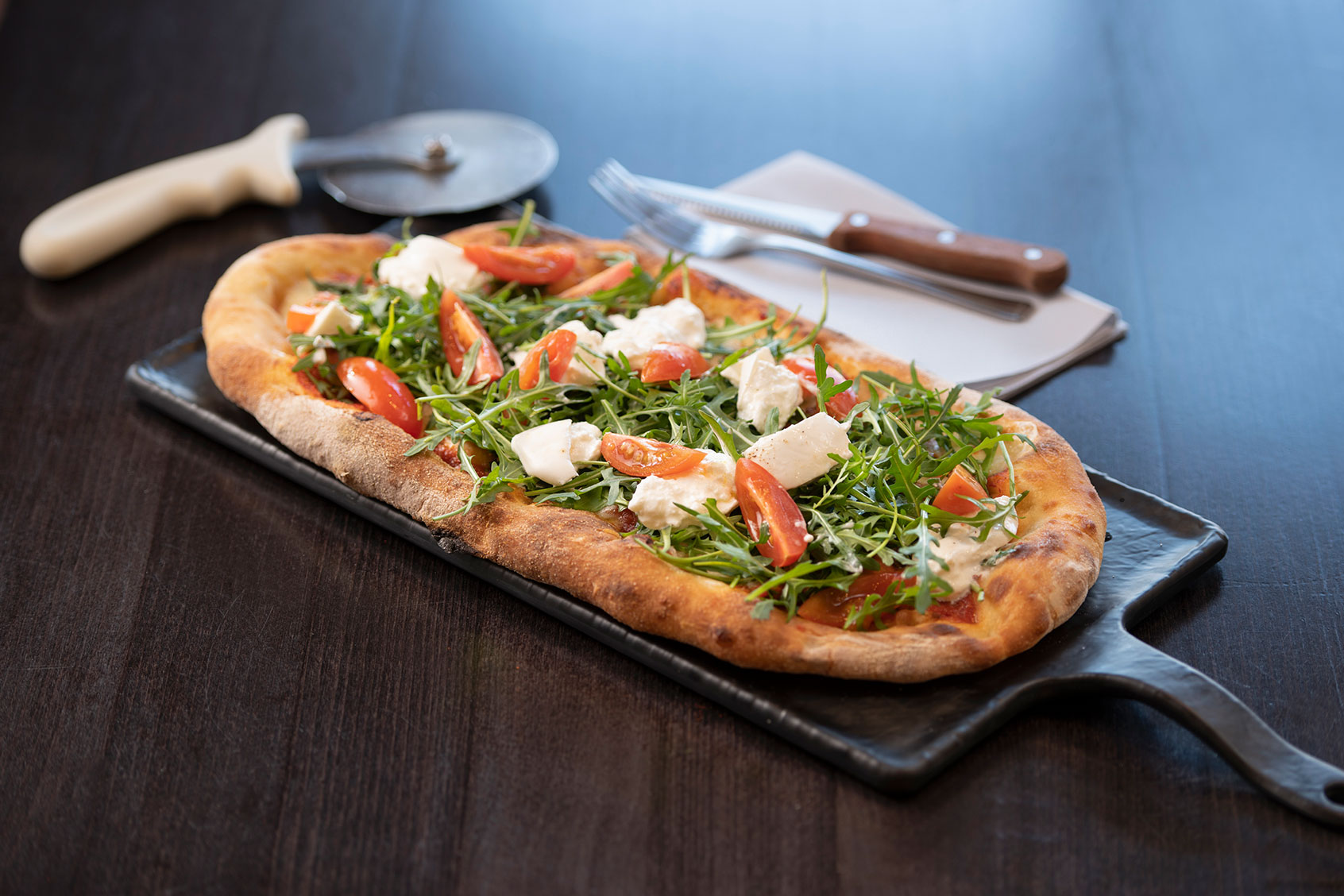Pizza is more than just a food. It’s a moment unto itself.
It can represent something different for every person: A deep, resonant love for Italian culture and uber-thin crust Neapolitan style pies; an adoration (like mine) for enormous, American style pies piled high with extra, extra cheese; a flippant DoorDash order on a particularly busy night; a celebratory meal a la a “pizza party. The list goes on and on. No matter your own opinion, pizza has arguably made its mark as much as any other food item.
But for those who may not be as enamored with the iconic staple, perhaps pinsa is more up your alley?
Pinsa allows for a bit more flexibility than pizza, if you will. Think of it as a younger relative with a slightly different vibe, but with familial similarities all the same. And, per food industry experts, you’re likely going to start seeing it pop up on menus near you.
“Pinsa is definitely a trend,” said Johan Coppens, master baker and culinary/technical adviser for Vandemoortele Europe NV during the recent 2023 International Dairy Deli Bakery Association’s show, per Food Business News. “I see more pinsa being made both here in America and throughout Europe, and that’s because it’s naturally delicious. It’s just water, salt, flour, olive oil and biga, instead of yeast.”
Fine Dining Lovers notes that the name comes form the Latin term pinsere, which means “dough pushed by hand.” It has been eaten for centuries thoughout Rome and Italy at large, but is now beginning to make its mark in the United States. Pinsa is also shaped differently: typically longer and more oval-esque than the perfectly rounded circles of pizza. (If you’ve ever heard of or been to Blaze Pizza, pinsa is much more similar to that sort of shape).
One perk about pinsa is that it the dough often doesn’t call for yeast, which is yet another aspect that impacts both the overall flavor and the preparation process overall.
Want more great food writing and recipes? Subscribe to Salon Food’s newsletter, The Bite.
As Chris Molly writes in Real Simple, the dough is much different, sometimes incorporating various types of flour, instead of sticking with only wheat. The crust is almost more reminiscent of naan or pita than traditional pizza crust, with a bit more “give”. Pinsa traditionally also has a high-hydration dough that yields a lighter, crisper crust. Also, if you’re cutting gluten, pinsa might be a preferable alternative to pizza: It typically contains less gluten. Sometimes incorporating rice, spelt or other non-wheat flour options, pinsa’s crust is much easier to digest for those with gluten intolerance and the flavor is often more dynamic and balanced, due to the varying flours that make up the crust itself.
According to the Institute of Culinary Education’s Lynne Andriani, pinsa dough tends to be wetter than pizza dough, meaning that, as pizza chef Matt Hyland told Andriani, “you have to kind of go with whatever shape it wants to go,” allowing the end product to be more irregular or misshapen that the spherical nature of a standard pizza. This also allows for a looser, more open-ended cooking process without the worrying that sometimes comes with attempting precisely-shaped round pizzas.
We need your help to stay independent
Pinsa also traditionally cooks in lower temperature ovens and for lesser time than pizza, as reported by Michelle Gant with TODAY. When it comes to toppings: Go wild — there are no restrictions. The sauce and cheese, of course, are staples, but anything else is fair game.
While pinsa may be seen as pizza’s younger relative, it remains to be seen if it may one day match its gargantuan cultural cache. Might as well enjoy one while we wait and see.

